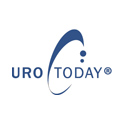Objectives:Preclinical and epidemiological studies have suggested the use of supplements such as selenium and vitamin E for prostate cancer (PCa) prevention; however, clinical trials have not demonstrated clear benefit in patients.
This study aims to investigate the current prevalence and predictors for use of these supplements in men in a urology population.
Design, Subjects, And Outcomes Measured:Three hundred and twelve (312) men visiting the Princess Margaret Hospital Ambulatory Urology Clinic were enrolled in this University Health Network Research Ethics Board-approved questionnaire-based study investigating supplement use, reasons for use and demographic characteristics.
Results:It was observed that 13.5% and 20.8% of the participants are currently using selenium and vitamin E, respectively, while 10.6% and 15.7% previously used selenium and vitamin E, respectively. Both education (percentage of users comparing less than college education versus college or above education: selenium: 14% versus 28%; p=0.008, vitamin E: 26% versus 41%; p=0.013) and health literacy (mean scores±standard error of the mean of users versus nonusers: selenium question 1: 1.4507±0.09576 versus 1.6083±0.07211; p=0.023, selenium question 2: 2.8750±0.04395 versus 2.7106±0.03774; p=0.000, selenium question 3: 1.4583±0.08377 versus 1.7064±0.06278; p=0.025, vitamin E question 1: 2.8036±0.04545 versus 2.7179±0.04097; p=0.010, vitamin E question 2: 1.5446±0.06698 versus 1.7077±0.07241; p=0.006) are predictors of selenium and vitamin E use on univariable analysis. On multivariable analysis education (selenium odds ratio=2.095, 95% confidence interval=1.019-4.305, p=0.044; vitamin E odds ratio=1.855, 95% confidence interval=1.015-3.338, p=0.045) remains a significant predictor of selenium and vitamin E use. Examining the data on use by education, it was found that more men with a higher education attributed their use of selenium to urologist advice (24%), and those with a lower education attributed their use of selenium to naturopath/homeopath advice (28%).
Conclusions: Many men who visit urology clinics use selenium and vitamin E despite the lack of clinical support for chemoprevention. Education and health literacy are important variables in determining the use of these supplements in these men. This information may aid in addressing the needs of the diverse patient population using these supplements for the prevention of PCa.
Written by:
Locke J, Hersey K, Margel D, Sorokin K, Fleshner N. Are you the author?
Urology Program, Princess Margaret Hospital-University Health Network, Toronto, Ontario, Canada.
Reference: J Altern Complement Med. 2012 Sep 17. Epub ahead of print.
doi: 10.1089/acm.2011.0184
PubMed Abstract
PMID: 22985217
UroToday.com Prostate Cancer Section



